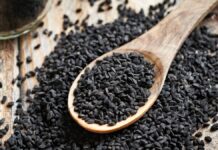Vultures are often seen as harbingers of doom, circling overhead as if waiting for death to claim its next victim. However, this image is a misconception. The behavior is far more practical than ominous: vultures circle primarily to exploit thermals – rising columns of warm air – for energy-efficient soaring.
The Science of Soaring
Vultures, like eagles, hawks, and kites, are masters of thermal riding. The sun heats the ground unevenly, creating pockets of warm air that rise like invisible elevators. These thermals are narrow and weak near the ground, causing vultures to turn in tight circles as they gain altitude. As they climb, the thermals widen, and their circles grow larger. This behavior isn’t about anticipating death; it’s about conserving energy while gaining height.
Hunting for Carrion, Not Waiting for Death
Once aloft, vultures use thermals as highways to travel long distances with minimal effort. They scan the landscape for carrion – dead animals – which is their primary food source. Some species, like turkey vultures, possess an exceptional sense of smell, detecting decaying carcasses from miles away. Before descending to feed, they circle to assess the situation: is the animal truly dead, and are there any larger predators already claiming the meal?
Nature’s Cleanup Crew: A Vital Ecological Role
Contrary to popular belief, vultures prevent the spread of disease, rather than contributing to it. Their stomachs contain highly corrosive acids and lethal bacteria, effectively neutralizing pathogens from infected carcasses. This role became tragically apparent in India when the vulture population collapsed in the 1990s due to diclofenac, a painkiller given to livestock.
The Indian Vulture Crisis: A Deadly Consequence
The widespread use of diclofenac in cattle led to kidney failure in vultures that scavenged on treated carcasses. The drastic decline in vulture numbers had devastating consequences: an unchecked spread of diseases like rabies, resulting in an estimated half a million human deaths between 2000 and 2005. This crisis highlights the crucial role vultures play in ecosystems by efficiently removing carcasses before pathogens can proliferate.
“We call them nature’s cleanup crew,” says Chris McClure of The Peregrine Fund, underscoring their ecological importance.
In essence, when you see a vulture circling, it’s not a sign of impending death but a demonstration of efficient flight, strategic hunting, and a vital service to the natural world. The myth of vultures as death omens obscures their true role as essential components of a healthy ecosystem.





























